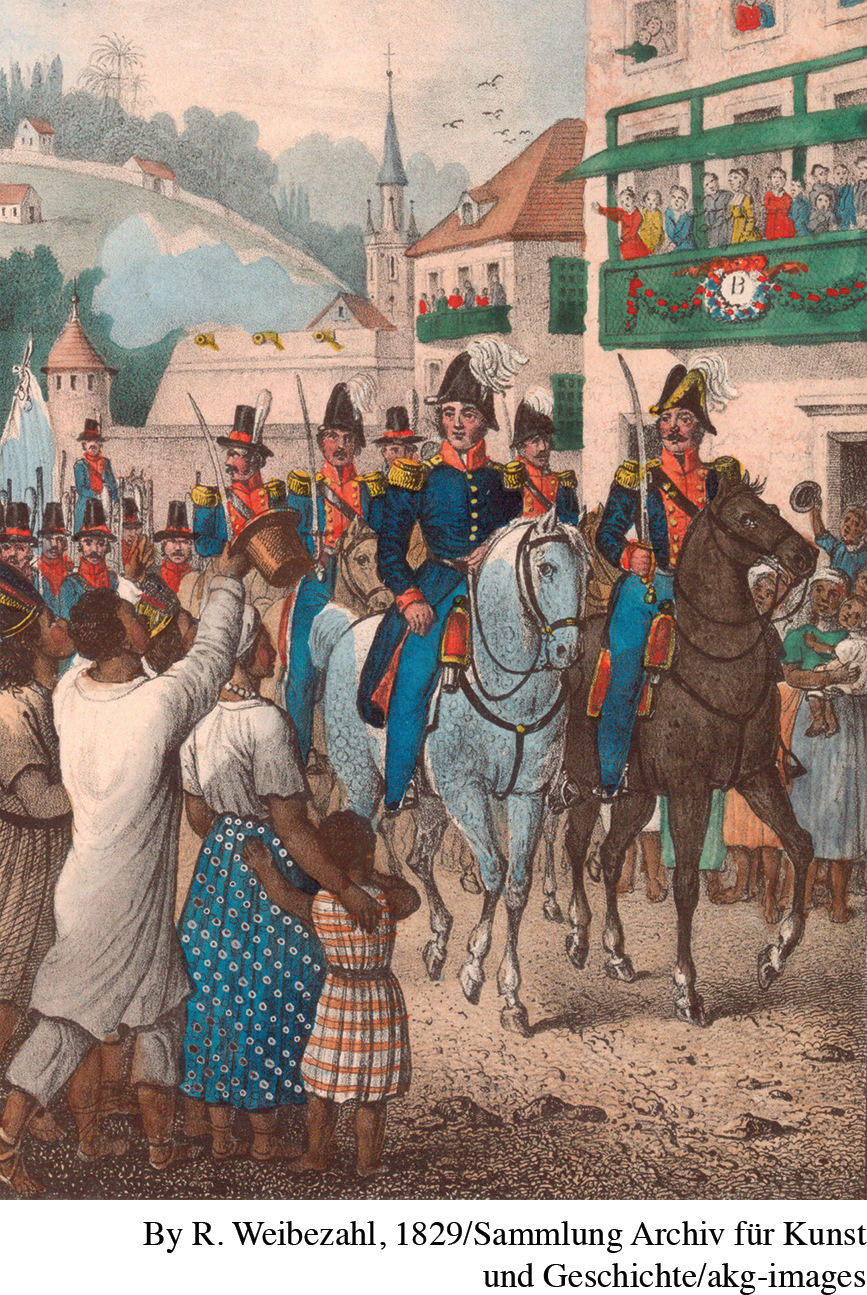Spanish American Revolutions, 1808–1825
The final act in a half century of Atlantic revolutionary upheaval took place in the Spanish and Portuguese colonies of mainland Latin America (see Map 16.3). Their revolutions were shaped by preceding events in North America, France, and Haiti as well as by their own distinctive societies and historical experiences. As in British North America, native-
Connection
How were the Spanish American revolutions shaped by the American, French, and Haitian revolutions that happened earlier?
Spanish colonies had long been governed in a rather more authoritarian fashion than their British counterparts and were more sharply divided by class. In addition, whites throughout Latin America were vastly outnumbered by Native Americans, people of African ancestry, and those of mixed race. All of this inhibited the growth of a movement for independence, notwithstanding the example of North America and similar provocations.
Despite their growing disenchantment with Spanish rule, creole elites did not so much generate a revolution as have one thrust upon them by events in Europe. In 1808, Napoleon invaded Spain and Portugal, deposing the Spanish king Ferdinand VII and forcing the Portuguese royal family into exile in Brazil. With legitimate royal authority now in disarray, Latin Americans were forced to take action. The outcome, ultimately, was independence for the various states of Latin America, established almost everywhere by 1826. But the way in which independence occurred and the kind of societies it generated differed greatly from the experience of both North America and Haiti.
The process lasted more than twice as long as it did in North America, partly because Latin American societies were so divided by class, race, and region. In North America, violence was directed almost entirely against the British and seldom spilled over into domestic disputes, except for some bloody skirmishes with loyalists. Even then, little lasting hostility occurred, and some loyalists were able to reenter U.S. society after independence was achieved. In Mexico, by contrast, the move toward independence began in 1810 in a peasant insurrection, driven by hunger for land and by high food prices and led successively by two priests, Miguel Hidalgo and José Morelos. Alarmed by the social radicalism of the Hidalgo-
The entire independence movement in Latin America took place under the shadow of a great fear—
And yet the creole sponsors of independence movements, both regional military leaders such as Simón Bolívar and José de San Martín and their civilian counterparts, required the support of “the people,” or at least some of them, if they were to prevail against Spanish forces. The answer to this dilemma was found in nativism, which cast all of those born in the Americas—
Nor did women as a group gain much from the independence struggle, though they had participated in it in various ways. Upper-

A further difference in the Latin American situation lay in the apparent impossibility of uniting the various Spanish colonies, so much larger than the small British territories of North America, despite several failed efforts to do so. Thus no United States of Latin America emerged. Distances among the colonies and geographic obstacles to effective communication were certainly greater than in the Eastern Seaboard colonies of North America, and their longer colonial experience had given rise to distinct and deeply rooted regional identities. Shortly before his death in 1830, the “great liberator” Bolívar, who so admired George Washington and had so ardently hoped for greater unity, wrote in despair to a friend: “[Latin] America is ungovernable. Those who serve the revolution plough the sea.”16
The aftermath of independence in Latin America marked a reversal in the earlier relationship of the two American continents. The United States, which began its history as the leftover “dregs” of the New World, grew increasingly wealthy, industrialized, democratic, internationally influential, and generally stable, with the major exception of the Civil War. The Spanish colonies, which took shape in the wealthiest areas and among the most sophisticated cultures of the Americas, were widely regarded as the more promising region compared to England’s North American territories, which had a backwater reputation. But in the nineteenth century, as newly independent countries in both regions launched a new phase of their histories, those in Latin America became relatively underdeveloped, impoverished, undemocratic, politically unstable, and dependent on foreign technology and investment (see “The Industrial Revolution and Latin America in the Nineteenth Century” in Chapter 17). Begun in broadly similar circumstances, the Latin American and North American revolutions occurred in very different societies and gave rise to very different historical trajectories.
SUMMING UP SO FAR
Compare the North American, French, Haitian, and Spanish American revolutions. What are the most significant categories of comparisons?